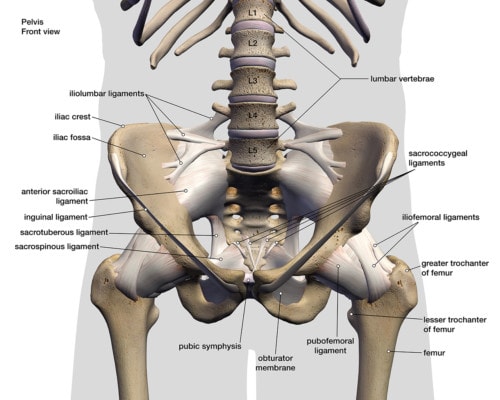SI Joint Fusion Problems vs. Stem Cell Injections
Many patients who have intractable SI joint pain who opt for surgery eventually experience SI Joint Fusion problems. As an alternative to this invasive surgery, do stem cell injections work for chronic SI joint problems? One of the advantages of 10 years of stem cell use for orthopedic injuries is that I have patients who come in years after a treatment for something else and I get a face to face update on an area we treated many years ago with stem cells. Simone is a young woman who had disabling SI joint pain in 2009. She just returned with a new neck injury and let me know how the stem cells injected into her SI joint and ligaments in 2010 had changed her life.

Hank Grebe/Shutterstock
The SI or sacroiliac joint is between the tailbone (sacro) and the back of the hip (iliac). The joint has loads of ligaments that help to transfer force from the leg to the spine and vice versa. The joint can be neglected sometimes in work-ups of back pain, but the most common treatment is either rehabilitation using exercises and manipulation or injection of steroids. When that doesn’t work, patients are often miserable with symptoms of pain in the back of the hip and often down the leg. In addition, sometimes the leg gives way.
Some patients opt for an SI joint fusion, but that’s a dog with big fleas, often leading to overload arthritis in the hip joint below and/or the low back above the joint. The problem is that the SI joint was built to move and give, so fusing it solid just means that forces that would have been absorbed in the joint get transferred to other parts of the leg and spine and these areas begin breaking down.
Simone had been involved in a car crash when she was first seen in 2009 and traditional treatments for her SI joint had failed. She had to drop out of school because of the disability. When all else failed, she had two injections of culture expanded mesenchymal stem cells-one in January and one in February of 2010. By the summer of that year the pain was mostly gone. She has had a few flare ups a year since then, but has none of the day to day disabling pain that kept her out of school. Because of the procedure, she was able to finish college and is now working full time as an engineer.
The upshot? SI joint pain can be disabling and there are few good solutions if simple therapies don’t work. Simone is 5 years out from her injections and still doing very well in that she went from disabled to able to finish school and work full time. It’s wonderful to see patients doing so well this far out from their procedure! I’m also thankful that she avoided an SI joint fusion, which in our experience doesn’t work for most patients long-term.

NOTE: This blog post provides general information to help the reader better understand regenerative medicine, musculoskeletal health, and related subjects. All content provided in this blog, website, or any linked materials, including text, graphics, images, patient profiles, outcomes, and information, are not intended and should not be considered or used as a substitute for medical advice, diagnosis, or treatment. Please always consult with a professional and certified healthcare provider to discuss if a treatment is right for you.
